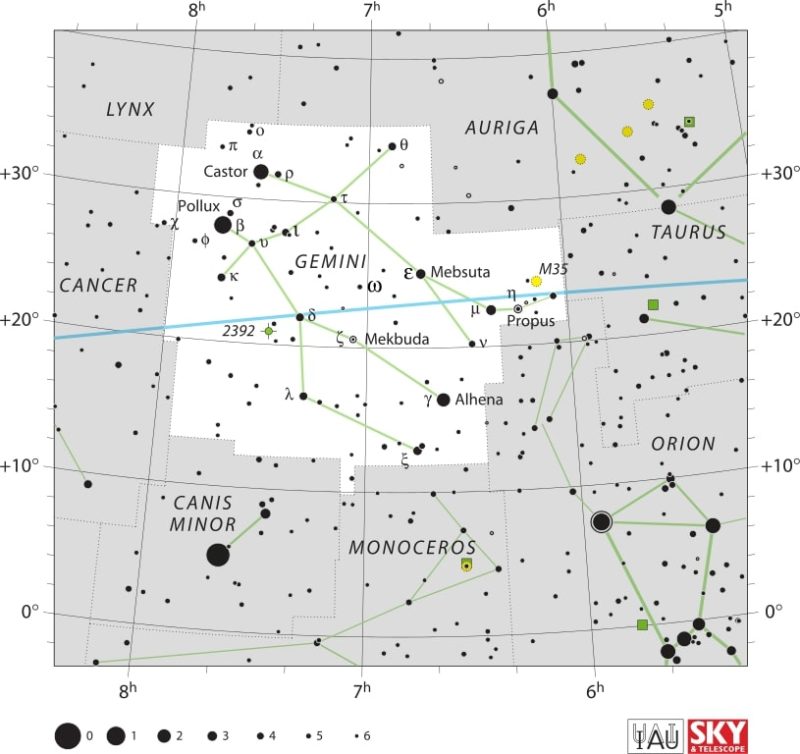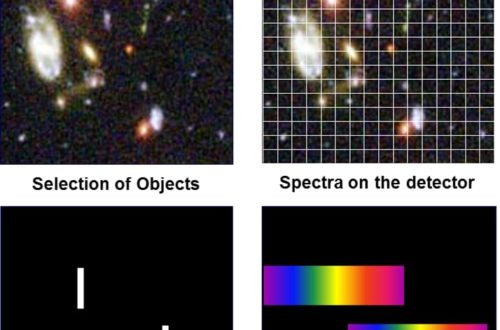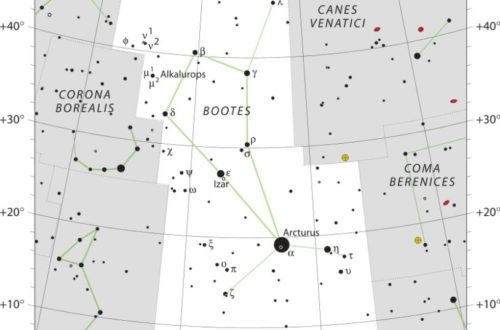Epsilon Geminid Meteor Shower Guide

The Epsilon Geminids are a relatively obscure meteor shower that makes an appearance every year in mid to late October, peaking on October 18. These meteors appear to radiate from the constellation Gemini, the twins.
People often spot just a few meteors per hour, making the Epsilon Geminids less active than major meteor showers like the Perseids.
To see them at their best, watch the sky after midnight. Since that’s when it’s darkest, Gemini shines brightly high above the horizon.
Since most meteors from the Epsilon Geminid meteor shower are faint, clear skies and minimal light pollution are a huge benefit. Read on for details on when, where and how to see this faintest of celestial streaks in the sky.
What Is the Epsilon Geminid Meteor Shower?
The Epsilon Geminids are a faint, soft meteor shower that becomes active every October. While they may not be as glamorously publicized as their more notable cousins, these unsung early-morning spectaculars are every bit as dazzling! Their appearances bring depth and variety to the annual calendar of recurring sky events.
Not the Famous December Geminids
Many people mistakenly think that we are talking about the well-known Geminids that peak in December. These two meteor showers are separate occurrences. The famous December Geminids with their high rates and bright fireballs pull in huge crowds of sky watchers.
Conversely, the Epsilon Geminids are a faint shower, with lower rates and more subdued appearance. The two showers originate from different objects too. The well-known December Geminids are thought to originate from the asteroid Phaethon, but the Epsilon Geminids’ origin is murkier.
Their visibility is quite different, too. Like their cousins, the famous December Geminids, Epsilon Geminids are visible from both hemispheres. In the Northern Hemisphere, the Epsilon Geminids will be much more obvious.
Pinpointing the Radiant Near Gemini
The radiant point of the Epsilon Geminids is located in the constellation Gemini, near the star Epsilon Geminorum. This point in the sky is where the shower gets its name from.
To see it, just watch for the constellation of Gemini to rise into view. The constellation consists of two nearly parallel lines of stars with Castor and Pollux forming the head. Epsilon Geminorum is a moderate-brightness star on the lower line.
Understanding where the radiant is located allows observers to identify meteor trails and distinguish Epsilon Geminids from unrelated, random meteors. Star maps or mobile apps can assist you in locating the radiant’s coordinates. That helps a lot to shape your gaze in the correct area of the sky.
The October Viewing Window
Though the Epsilon Geminids are active between October 14 and 27, they peak on October 18. It’s on this night that the most meteors are seen.
As with any meteor shower, weather is an important factor for visibility. The better the conditions, the more you’ll see—clear, dark skies are essential, whereas clouds or light pollution will hinder your viewing prospects.
Planning ahead—looking at the lunar phase and weather forecast—greatly increases your chances of seeing the shower. Observers may have to be willing to spend more time outdoors and temper their expectations, due to the shower’s low activity.
How Many Meteors to Expect
At peak activity, the Epsilon Geminids only produce around 3 meteors per hour. This is quite a bit less than the 120 meteors per hour seen during the December Geminids.
The real number will vary depending on your location, sky conditions, and light pollution. For meteorwatchers who prefer quality over quantity, it only takes a brief streak of the right meteors to make the effort worth it.
Their Speed and Look
Epsilon Geminid meteors hit the atmosphere at around 70 kilometers per second. Their high speed causes them to zip across the sky in a second or less, which indicates the majority of meteors are dim with fewer producing bright meteors.
The velocity of the trail means it’s relatively short-lived. Catching one requires a focused eye and some good fortune!
The Mystery of Their Origin
Their origin is not completely understood. Many theories have linked them to asteroids or comet debris, but the most likely candidate is comet C/1964 N1 (Ikeya).
Researchers are still studying, monitoring, recording, and modeling the shower in an attempt to answer this riddle.
Gear for Your Meteor Watch
Watching the Epsilon Geminid meteor shower is pretty easy, but having the right gear makes the whole night go more smoothly and be more enjoyable. Most meteors are clear to the naked eye, but having a few extras on hand can help, especially if you plan to stay out for hours.
Rely on Your Adapted Eyes
To help you spot the most meteors, give your eyes some time to adjust to the darkness. This can take 20–30 minutes. Avoid looking at your phone or any other bright lights as much as possible during this time.
This will make it much easier for your eyes to detect the dimmest meteors. If you do require some light, red light is ideal as it doesn’t affect your dark-adjusted vision. Catching meteors requires a bit of patience. Sometimes you’ll see a whole bunch in quick succession. Other times you’ll go a long time before seeing any.
Pack Warm Layers and Comforts
Those nights will be chilly even in the city—so come prepared. Pack warm layers, including a jacket, hat, gloves, and thick socks. Bring along some blankets and lean back in a comfy reclining chair or picnic blanket for a super comfy seat.
Come prepared with plenty of snacks and a thermos filled with a hot drink. Additional layers are a good thing in case temps dip more than you anticipate.
My View: Value in the Overlooked
There’s a good bit of wisdom in discovering value where everyone else walks by. More obscure meteor showers such as the Epsilon Geminids are sometimes overlooked in larger skywatching roundups. Just because they are under the radar doesn’t mean they are of no value.
Perhaps the Epsilon Geminids lack the glamour of more popular meteor showers, such as the Perseids or Geminids. Their subtle, quiet arcs across the night sky tell a tale that is absolutely worth learning about.
Some folks just know that the best ideas come from looking where everybody else isn’t. In science, the most impactful discoveries are frequently made by looking for value in the overlooked minutia.
Stargazing is a deeply individual experience in and of itself. Relearning the joy of the quiet beauty of faint meteors is gold to the soul.
It’s a gentle reminder that happiness and meaning really do spring from the little, unassuming things. People who make the effort to view the Epsilon Geminid meteor shower usually find an opportunity for contemplation, inspiration, and development.
It’s no longer just about the spectacle, it’s about the experience. As you watch these meteors, your perspective is transformed. It asks you to consider the magnitude of the cosmos and your place in it.
Conclusion
The Epsilon Geminids might not be the flashiest show in the sky, but they give quiet nights a bit of spark. For many, the experience is simply pulling out a blanket, laying it down, and watching. No hassle, no hurry. Even the faintest of these meteors serves as a reminder that even the little guys can be truly valuable. A little patience and a clear sky become a memory you can carry with you.
Ready to see more of these secret trails through the sky? So, save the date, keep looking up, and enjoy this cosmic spectacle with a loved one! There’s so much more to the sky than you realize. Look up, and you’ll be surprised by what you discover.
Frequently Asked Questions
What are the Epsilon Geminids?
The Epsilon Geminids are a meteor shower that seems to radiate from the constellation of Gemini. As for their characteristics, they are best known for producing faint, fast-moving meteors, and peak in mid October.
How many meteors can I expect to see per hour?
Expect to see around 3 meteors during peak hours. The Epsilon Geminids are very weak compared to major showers such as the Perseids.
Do I need special equipment to see the Epsilon Geminids?
All you need is a reclining lawn chair and warm clothes. No binoculars or telescopes required. Meteor showers are best viewed with the naked eye.
Why bother watching a faint meteor shower?
As with all faint meteor showers, the Epsilon Geminids provide a quiet, crowd-free stargazing experience. They’ll be ideal for anyone who appreciates lovely, quiet nights and the more elusive treasures of the sky.
See also:
- Previous meteor shower: Delta Aurigid Meteor Shower
- Next meteor shower: Orionid Meteor Shower
Would you like to receive similar articles by email?





